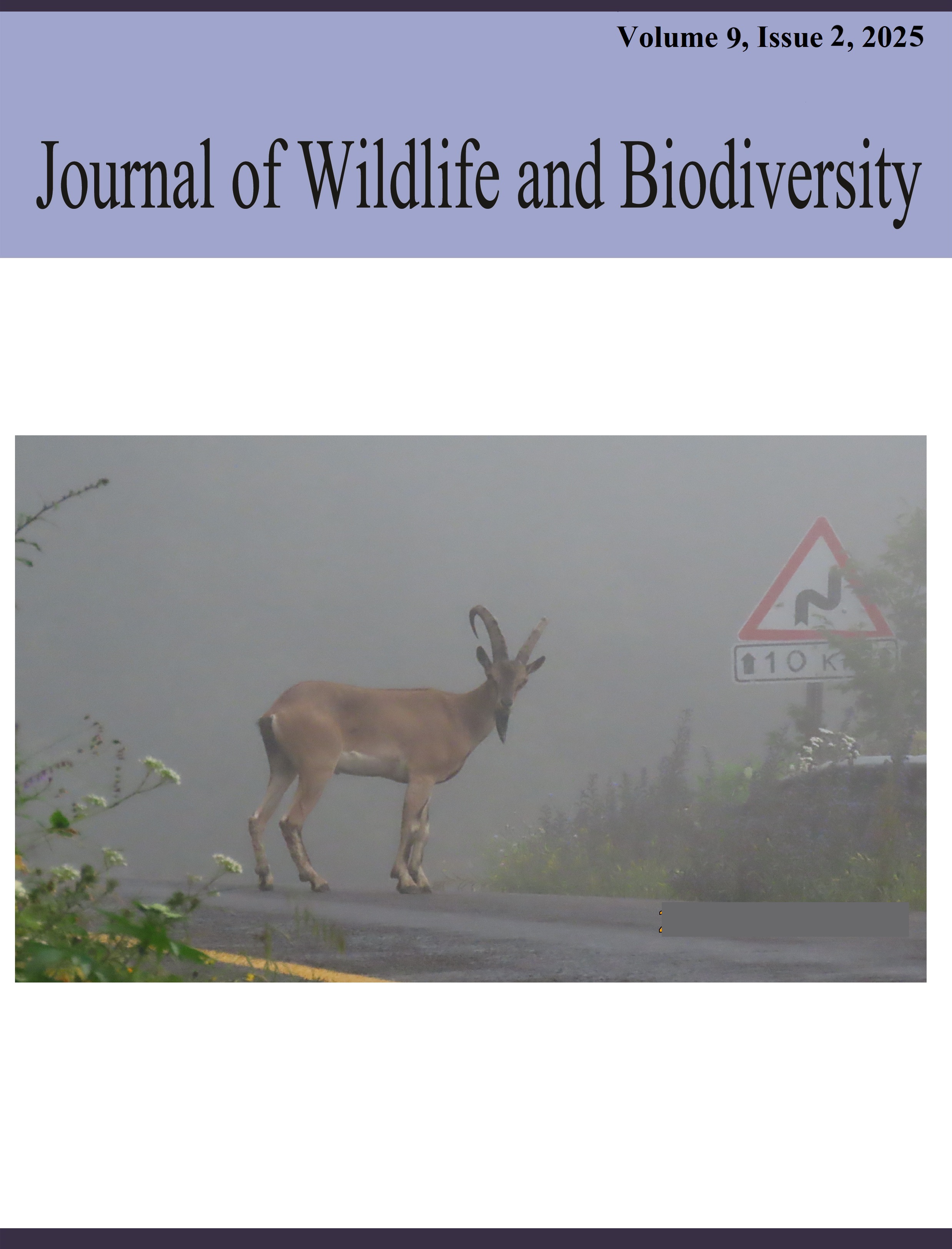Impact of rhizobacteria (Bacillus subtilis RT-3, Bacillus subtilis RT-6) and Entomopathogenic nematodes (Steinernema feltiae) on soil agrochemical and biological properties in potato cultivation
DOI:
https://doi.org/10.5281/zenodo.15521179Keywords:
Mineral fertilizers, soil microorganisms, agrochemical parameters of soils, K-Gumat leaf treatmentAbstract
The article presents data on the study of the effect of effective potato rhizobacteria with biofungicidal properties of Bacillus subtilis RT-3 and Bacillus subtilis RT-6 and entomopathogenic nematodes Steinernema filtiae on the background of the use of mineral fertilizers (NP) on microflora, agrochemical composition of soils, and nematode content in potato cultivation. As a result of their application at the beginning of the growing season, before sowing potatoes and by the end of the growing season, positive results were obtained on changing the microbiological, agrochemical, and entomological composition of soils and increasing the number of tubers by 5 pieces on average per 1 plant.
References
Agansonova, N. E., and Danilov, L.G. (2013). Steinernema feltiae protense subsp. N. - a new promising subspecies for controlling wireworms on potatoes. Plant Protection and Quarantine, 2, 30–31.
Bedding R.A., and Akhurst R.J. (1975). A simple technique for the detection of insect parasitic rhabditid nematodes in soil. Nematologica,21, 109–116.
Danilov, L. G. (2001). Biological bases of the use of entomopathogenic nematodes (Rhabditida: Steinernematidae, Heterorhabditidae) in plant protection. The author's abstract. doctor. diss. –St. Petersburg, 46.
Gaffke, A.M., Shapiro-Ilan, D., Alborn, H.T. (2022). Deadly scents: exposure to plant volatiles increases mortality of entomopathogenic nematodes during infection. Frontiers in Physiology. Basel, 2022. 978359.
Grewal, P. S., Ehlers, R. U., & Shapiro-Ilan D. I. (2005). Nematodes as Biocontrol Agents. Wallingford, UK: CABI Publishing.
Kaya, H. K., & Gaugler, R. (1993). Entomopathogenic nematodes. Annual Review of Entomology, 38, 181-206. https://doi.org/10.1146/annurev.en. 38.010193.001145.
Kudrin, A.A., and Sushchuk, A.A. (2022). Methods for studying soil nematode communities. Russian Journal of Ecosystem Ecology. 7(2). https://doi.org/10.21685/2500-0578-2022-2-5
Kurbonova, N. S. (2023a). Can entomopathogenic nematodes be the best measure for growing eco-friendly agricultural products. American Journal of Applied Science and Technology, 3(07), 23-31.
Kurbonova, N.S. (2023b). First report on local entomopathogenic nematode Steinernema feltiae in Uzbekistan. International. Journal of Advance Scientific Research, 3(07),225-235. https://doi.org/10.37547/ijasr-03-07-38
Miller, R.W. (1989). Novel pathogenicity assessment technique for Steinernema and Heterorhabditisentomo pathogenic nematodes. Journal of Nematology, 21, 574.
Liu M, Hu Z, Fan Y, Hua B, Yang W, Pang Sh, Mao R, Zhang Y, Bai K, Fadda C, Santis PD, Bergamini N, Usmankulova A, Buriyev SS, Zhang X (2024) . Effects of leguminous green manure–crop rotation on soil enzyme activity and stoichiometry. Journal of Plant Ecology,17(6), ertae065. https://doi.org/10.1093/jpe/rtae065
Frias, J., Toubarro, D., Bjerga, G. E. K., Puntervoll, P., Vicente, J. B., Reis, R. L., & Simões, N. (2022). A ShK-like Domain from Steinernema carpocapsae with Bioinsecticidal Potential. Toxins, 14(11), 754. https://doi.org/10.3390/toxins14110754
Usmonkulova, A., Shonakhunov, T., Kadirova, G. (2022). Activity of nitrogen-fixing cyanobacteria under salinity and heavy metals stress. J. Pharm. Neg. Resul, 13(3), 355–363,
Usmonkulova, A.A., Kadirova, G.KH., Khusanov, T.S., Shonakhunov, T.E., Shukurov, N. (2024). Determination of local bacteria synthesizing ACC deaminase on plant growth indicators under nickel and cadmium stress conditions. SABRAO Journal of Breeding and Genetics, 56(5), 2033-2044, http://doi.org/10.54910/sabrao2024.56.5.26
Lewis, E.E., Campbell, J., Griffin, C., Kaya, H.K., & Peters, A. (2015). Behavioural ecology of entomopathogenic nematodes. Biological Control, 38(1), 66-79.
Wang, J., Xu, Y., & Zhang, Y. (2016). Efficacy of entomopathogenic nematodes against soil pests in China. Chinese Journal of Biological Control, 32(4), 289-296. https://doi.org/10.16400/j.cnki.1003-8882.2016



